Last Updated on February 12, 2025
Manuel Antonio is Costa Rica’s most popular National Park – even though it is the smallest one in the country! Often listed as one of the most beautiful National Parks in the entire world, the appeal of Manuel Antonio is easy to see: stunning beaches, rain forest trails and wildlife galore. Add to that the accessibility of the park, and you can see why it is the most visited National Park in Costa Rica.
Because the park is so popular, nearby hotels tend to fill up quickly, and planning a trip to Manuel Antonio in detail does pay off!
In this guide, I am sharing everything you need to know before visiting Manuel Antonio:
- How to get to Manuel Antonio
- How much does it cost to visit Manuel Antonio
- Where to stay when visiting Manuel Antonio
- When is the best time to visit Manuel Antonio
- The best beach in Manuel Antonio

But let’s start with the most important question:
Is it worth visiting Manuel Antonio?
Yes, absolutely! Manuel Antonio is famous for a reason. The National Park offers everything Costa Rica is famous for: wildlife, jungle trails, and pristine beaches! If you want to see wildlife in Costa Rica, Manuel Antonio National Park is one of the best places for that – animal sightings are almost always guaranteed – especially monkeys, iguanas and birds. Paying a guide will increase your chances to see wildlife.
Manuel Antonio is also very scenic beyond the National Park – even though the area is very touristy and developed, you don’t see large hotel complexes like in other parts of the country. In Manuel Antonio, the hotels are small and unique and blend in with the environment.
When is the best time to visit Manuel Antonio?
If you want to avoid crowds, don’t visit in December, when the park gets very busy – especially around the hotels.
It remains busy from December until April, Costa Rica’s dry season. January and February are the sunniest months in Manuel Antonio. If your visit is during these months, you can still escape the crowds (at least somewhat) by visiting the park very early in the morning – as soon as it opens!
Note that it is recommended to buy your tickets in advance during the busy months, or you may not be able to get into the park. Visitor numbers are capped at 800 per day. See below for more information on how to buy a ticket.
During the rainy season (September – November) you’ll have to factor in heavy rains in the afternoon, but it is usually sunny in the mornings into the early afternoon. Those are the least busy months.
May through November are less busy, and also cheaper. During those months, hotels don’t charge peak season prices and you’ll also be able to find good deals on flights and hotels.
The temperature is pretty similar year-round, in the 80s – low 90s (27 – 33 Celsius).
Manuel Antonio National Park Opening Times
Manuel Antonio National Park is open every day of the week EXCEPT for Tuesdays.
The park opens at 7am and closes at 4pm.
How to get to Manuel Antonio
Manuel Antonio is located just under five miles south of Quepos, a small harbor town on the Pacific Coast. Quepos itself is not very exciting – most visitors use it solely as the gateway to Manuel Antonio. However, Quepos has a nice marina and there are good restaurant options, plus you can do some shopping or gamble at the casino.
From San Jose
If you travel from San Jose to Manuel Antonio: it is about 105 miles (170 kilometers) southeast of the capital, roughly 3.5 hours (via toll road) – 4 hours (via non-toll road) by car. Note that if you take the toll road, you’ll need to have some Costa Rican Colones on you to pay at the toll booths (tolls come to less than US$10 for the entire way).
If you don’t want to rent a car, you can take a shared shuttle (around US$50) or a private shuttle (US$180 for up to four people) or the public bus.
Tracopa Autobuses has around ten departures per day from San Jose to Manuel Antonio, roughly every 90 minutes. The ride takes 3.5 hours (if there’s no traffic) and the ticket is 5,285 Colones (US$7.75). Check the website for the exact departure times.
If you don’t want to spend hours in the car, there are also flights from San Jose to Quepos on small Cessnas. Sansa Air and Costa Rica Green Air both offer this route; tickets range from US$89 – US$125.
From Quepos
From Quepos there is a public bus that runs every 20 minutes and charges 335 colones (less than US$1 – make sure to have cash on you!). The bus runs from 5.30 in the morning till 9.30 at night and you can also catch it along the main road between Quepos and Manuel Antonio. There’s also Uber in Manuel Antonio, which makes getting around super easy, even after dark. In addition to Uber, there are regular taxis, too.
Note that if you do have a rental car and drive to the National Park, I’d advise you to get there early. There is limited parking and the parking lot does fill up, especially during high season.
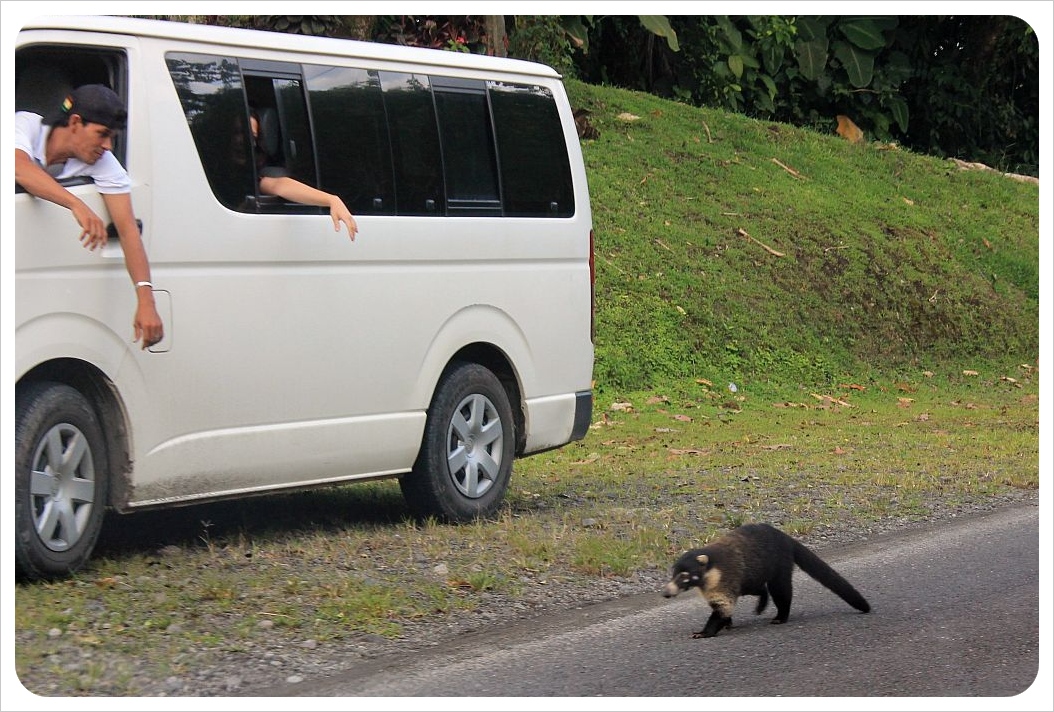
Do you need a car in Manuel Antonio?
You don’t need to rent a car to visit Manuel Antonio – as mentioned above, you can get there by public bus or shuttle from San Jose, and if you’re staying in nearby Quepos, there are regular public buses and Uber / taxis is also available in the area.
How much does it cost to visit Manuel Antonio
Admission to the National Park is US$18 (plus tax), and you can buy tickets at the entrance of the National Park.
Children between the ages of 2 and 12 pay only US5$ (plus tax), and children under 2 don’t have to pay.
Note that you have to pay the admission fee in cash, unless you book a ticket in advance online via the SINAC (Sistema Nacional de Areas de Conservacion) website. To buy tickets online, you will have to create an account first.

How much time to spend in Manuel Antonio
Ideally, you’ll want to spend at least two nights in Manuel Antonio. That way you can spend a full day in the National Park, but you still have time to explore the village and the public beach or your hotel pool on your arrival day.
If you have a full day to spend in Manuel Antonio National Park, you’ll be able to walk all of the trails and visit both beaches inside the park.
Of course you can spend more time in Manuel Antonio – if you have an extra day, you can spend the first day exploring the jungle trails in the park and come back the next day to enjoy the beaches.
And there’s not just the National Park – you can also take a boat tour to the mangroves of Damas Island, go deep-sea fishing, go on a kayaking trip or a snorkeling trip to the reefs off-shore that have plenty of tropical fish. If you are looking to party, book the 4-hour Ocean King Catamaran ride which includes lunch, drinks and a snorkeling stop.
If you are visiting during peak whale season (August – September), you may want to add an additional day to go on a whale watching trip.
If you’re in a rush: You can get an overview of the park in half a day if you’re pressed for time, but considering how beautiful this park is, it’d be a shame to rush through it.
Where to stay in Manuel Antonio
There is no shortage of hotels in and around Manuel Antonio. Be aware though that most of the hotels are a short drive from Manuel Antonio: the majority of hotels is spread along the main road from Quepos to Manuel Antonio. Restaurants are also spread out along the main road. There is Uber in Manuel Antonio, which makes it easy to get to the National Park and back, even if your hotel is a bit further away.
What’s the best beach in Manuel Antonio?
There are several beaches in Manuel Antonio: some are inside the National Park (so you’ll have to pay park admission to get to them) and a couple outside the National Park that are FREE to visit! The beaches outside the National Park are Playa Espadilla, Playitas Beach (a small extension of Playa Espadilla on the northern end of the beach) and the smaller Biesanz Beach.
Inside the National Park, there are Manuel Antonio Beach, Playa Espadilla South, Escondido Beach and Playa Las Gamelas. The closest one to the entrance of the National Park is Playa Espadilla South, which is basically the southern end of Playa Espadilla, the public beach in Manuel Antonio. The stretch of beach inside the National Park is cleaner, more pristine, and not as developed (i.e. no umbrellas, no sun loungers, no beach vendors, etc). If you want to go to the beaches inside the National Park: they’re roughly a 30-mins walk from the entrance.
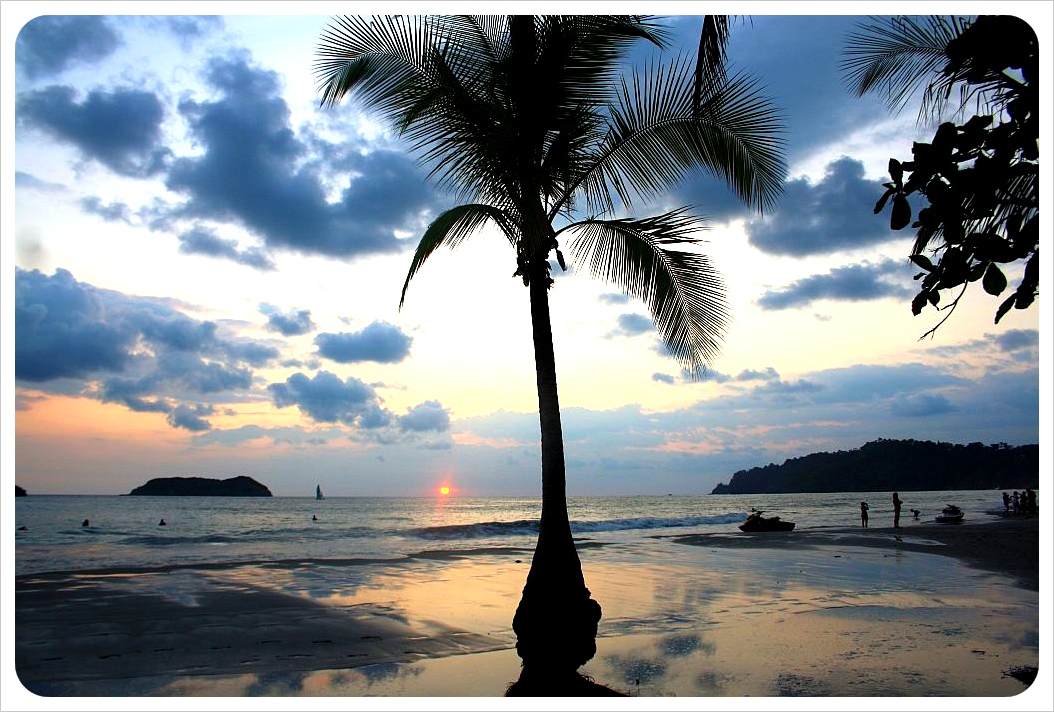
Tips for your visit to Manuel Antonio
Don’t visit Manuel Antonio on a Tuesday!
If you’re planning your trip to Manuel Antonio for a Tuesday, you may want to move around some things on your itinerary: the National Park is closed on Tuesdays.
Paying a guide is worth it!
If you’re interested in seeing wildlife, I highly recommend paying for a guide. There are over 300 species of mammals and birds in the park, but most of them are shy. The first time I went to the park, I was disappointed in how little wildlife we saw (until we arrived at the beach and encountered a huge monkey family). When I returned a few years later, I paid for a guide and we saw so many animals – from tiny snakes hidden beneath leaves to sloths high up in the trees.
The guides are very informative, and they know where the animals like to hang out (or hide!). When you get to the entrance of the park, you’ll see guides outside offering their services. They also usually have binoculars, which is great to spot further away animals. Don’t be shy to negotiate the price if what they’re quoting you seems a bit steep. Guided tours last about 2 hours.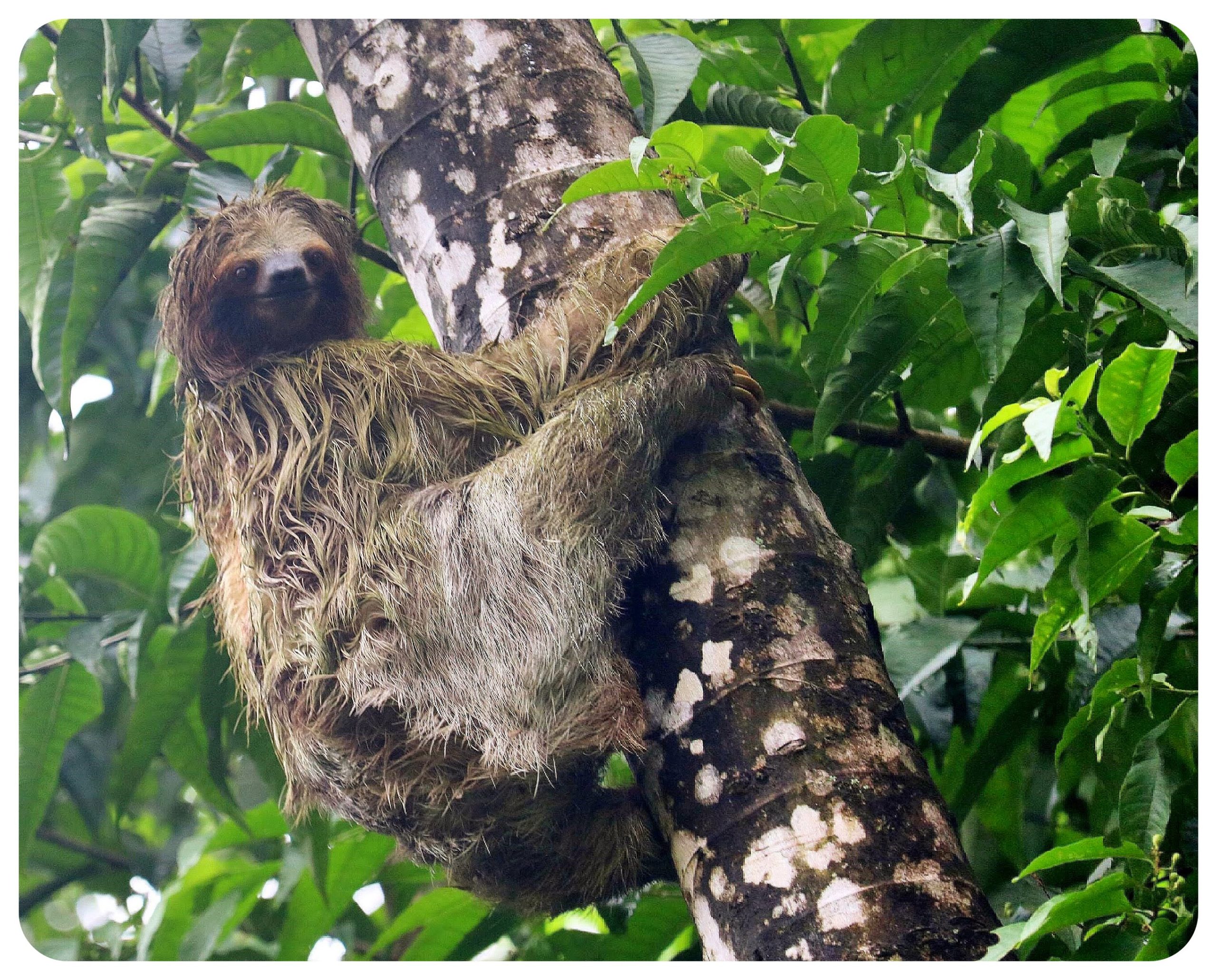
Don’t forget to pack your bathing suit!
I find the beaches inside the National Park to be nicer than the other beaches in Manuel Antonio, so definitely bring your swimsuit, a sarong, marine-friendly sunscreen, a beach towel and any other items you need for a beach day.
The climbs are worth it
Most of the trails inside the National Park are easy to navigate, even for people with disability issues. There are two trails, however, that require a bit more of an effort: both the Punta Catedral trail and the Miradores trail have steep inclines. They’re both worth it though! The rewards are beautiful panoramic views over the coastline and the rainforest. If you’re physically in good condition, definitely don’t miss these trails!
Be careful when bringing food
If you can go without food for the duration of your stay, then you don’t have to worry about the cheeky monkeys and pesky racoons that are not afraid of humans at all and are known to attack people’s bags in search of anything to eat. And they’re not just looking for fruits and vegetables – no, they’re just as interested in a bag of chips as they’re interested in a banana.
The monkeys and racoons are well aware that our backpacks and bags are where the good stuff is, and they’re finding their way inside of them. They know how to open Ziploc bags and Tupperware boxes, bags of chips and packs of cookies.
Warning: They can get quite aggressive when they try to get food. Rabies shots are expensive, so you may want to think twice about fighting a monkey when it comes too close to your belongings. And know that if you’re going for a swim and nobody is looking after your stuff back on the beach, the local wildlife will get into your stuff.
I know that if you’re traveling with kids or want to spend the entire day in the park, it is impossible NOT to bring any food, but be cautious with food items (also when you eat them!) and don’t leave your bags out of sight.
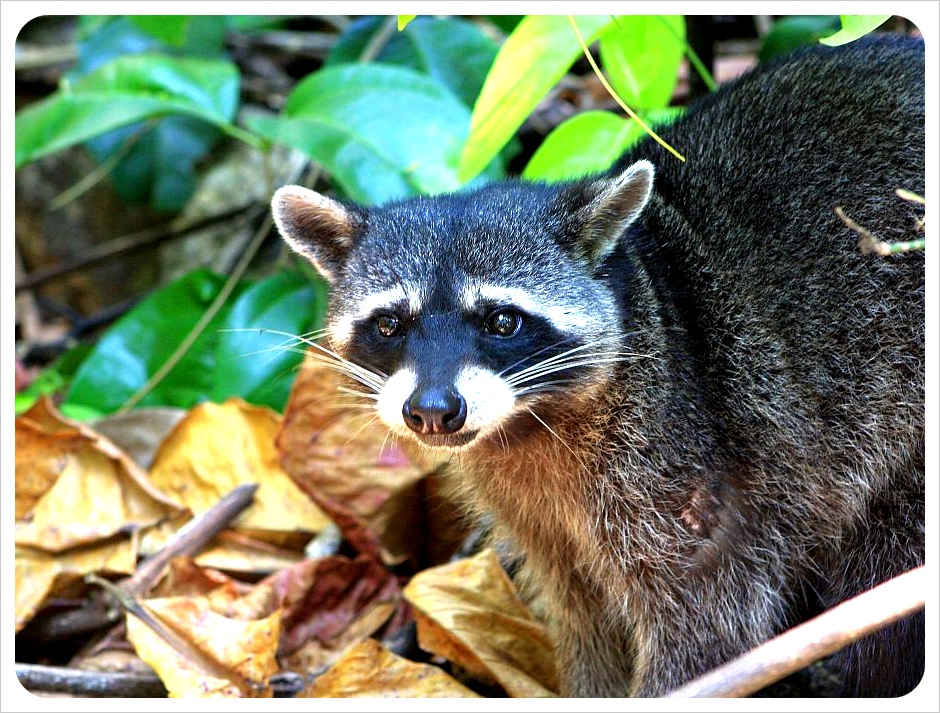
Leave your valuables at home
If you are planning to spend the whole day in the park, leave your valuables in your hotel room. There’s absolutely no need to carry all of your credit cards, your passport and more cash than you’re planning to spend.

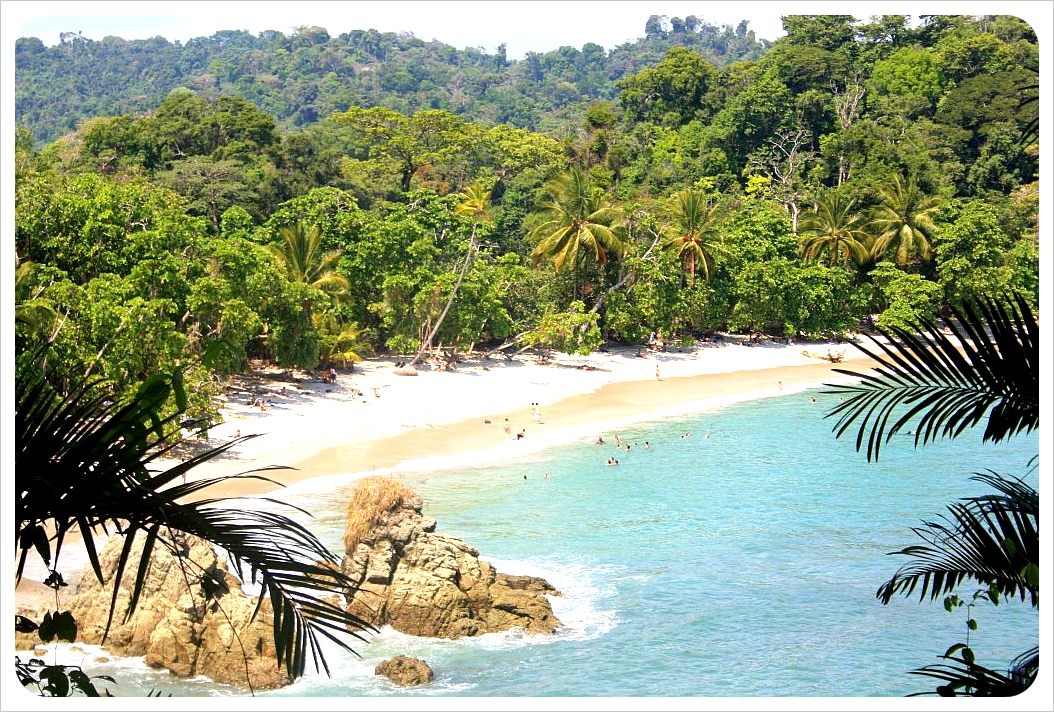
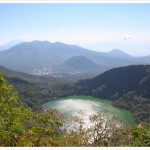



travibble
Monday 31st of July 2023
Thank you for sharing your travel tips and recommendations, they will definitely come in handy for my future trips. Keep up the great work and I look forward to reading more of your adventures!”